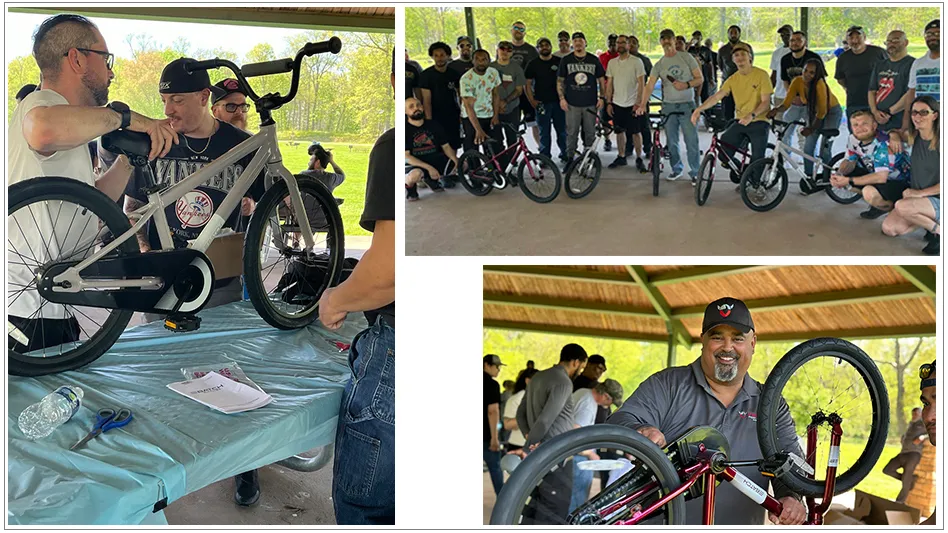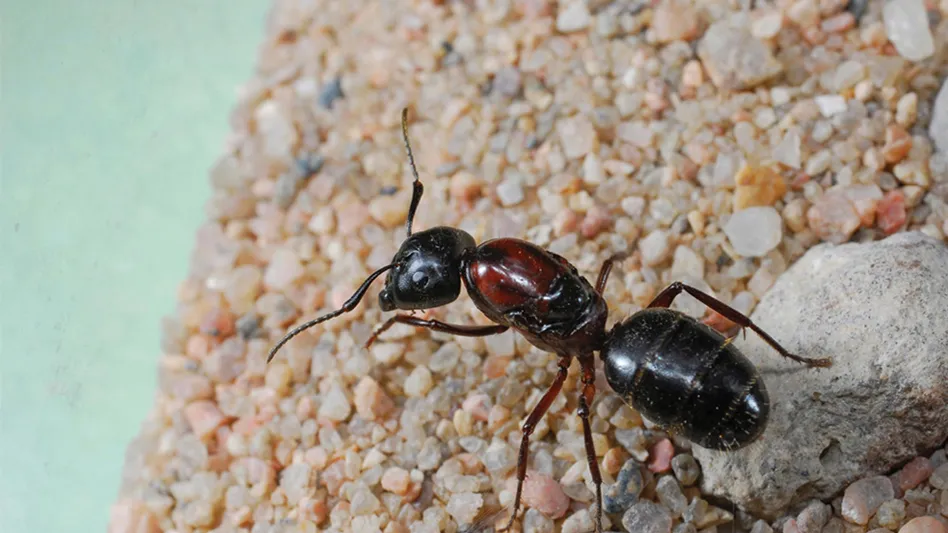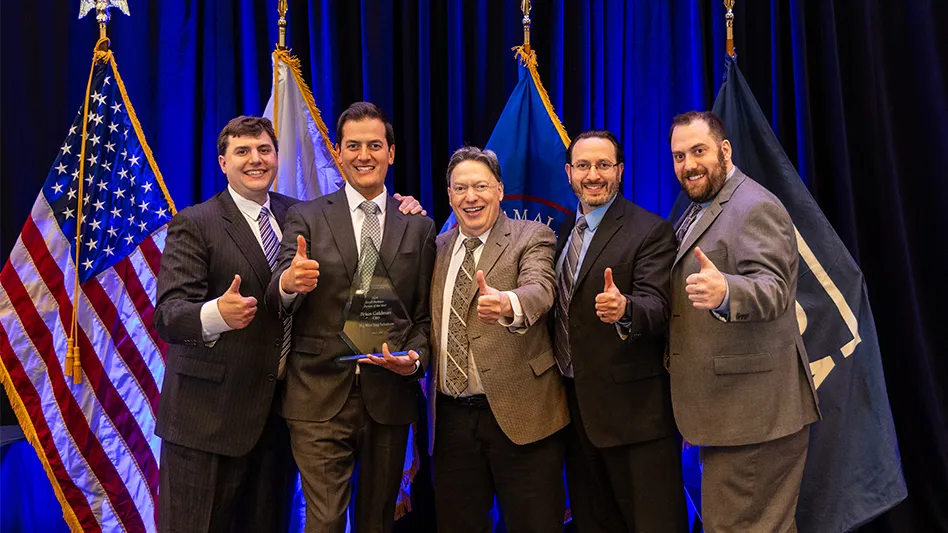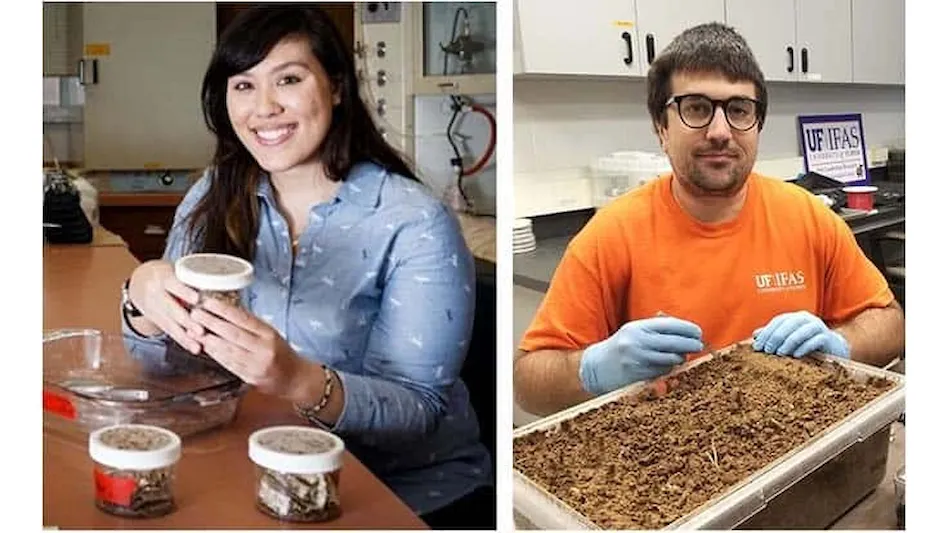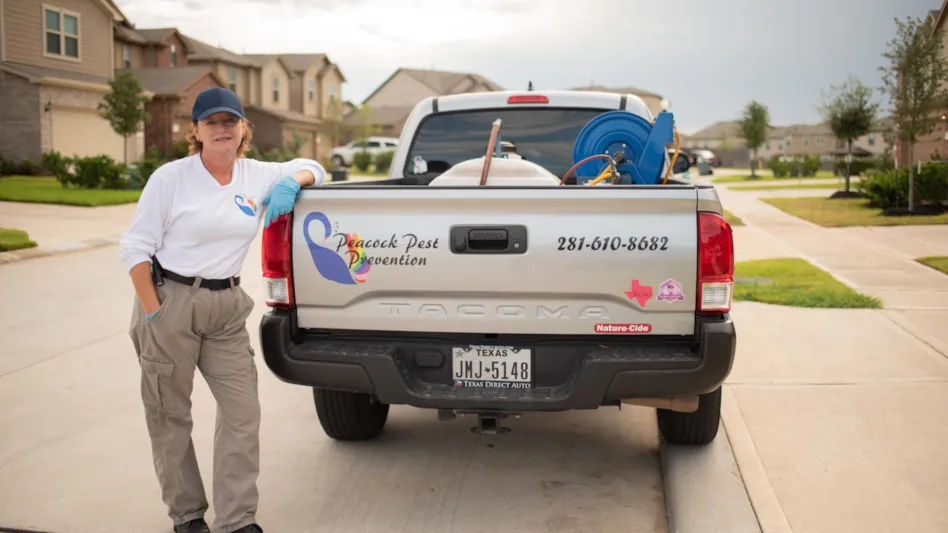New Product and equipment innovations are making IPM a reality in these highly sensitive accounts.
Dining establishments come in many shapes and sizes. They are located in every conceivable site from the sandwich shop in a high-rise office building to the country store located miles from "anywhere." Although a few types of pests are likely to cause most of the problems in any given restaurant, a wide variety of pests could be encountered at any given location depending on the region of the country.
Typically the two pests of most concern in restaurants are the German cockroach and the house mouse. Other cockroaches — such as the American and oriental — as well as rats, will occasionally be encountered in these types of accounts. Stored product pests may certainly be encountered at any time as restaurants use large amounts of stored food products. Ants can invade at any time during warm months, especially in Southern states where numerous structure-infesting ant species exist. Certain types of flies are also encountered in restaurants. At particular times of the year, problems with occasional invaders will occur, especially ground beetles and crickets that are attracted to outdoor lighting.
Restaurants, more than other types of buildings, are under a constant threat of pest invasions due to a variety of reasons. As a result, they require frequent, regularly scheduled service visits to maintain a pest-free environment. But do these service visits need to involve insecticide applications each and every visit? Is there a better — or "low key" — approach to servicing restaurants?
A good many pest management professionals have been trained to use insecticide treatments as their primary focus when servicing restaurants. It must be remembered, however, that pest control is not a pesticide application business, it is a service business that uses pesticides as a tool. In some cases, pesticides will be the primary tool used. In other situations, they will be of minimal benefit. A well-trained pest management professional understands when and where to use pesticides appropriately and judiciously, and this factor is at the heart of a low-key approach to pest management in and around buildings.
THE NEEDS OF PESTS. It is well-known that pests, like all other creatures, require food, water, shelter and warmth in order to survive and thrive. Minimizing these resources, or denying them to pests, is a critical step in limiting the size of the pest population. Such steps are most easily applied to cockroaches, rodents, flies and stored product pests, but have value in the control of ants, especially when a baiting program is employed.
Obtaining customer cooperation in removing food and water sources, eliminating potential harborages, and sealing cracks is one of the most difficult tasks facing the pest management professional. Some restaurant managers clearly understand the role their facility and its employees play in pest infestations. Other managers either do not know or simply ignore good sanitation practices and the effect these have on minimizing pest infestations. In a good many cases, such managers will not address sanitary issues in their restaurants until forced to do so by regulatory officials.
Education should always be a key tenant of effective pest management. Service professionals and their managers should strive to educate restaurant managers and their employees regarding the effects their actions have on pest populations within their buildings. Effective pest control companies provide training classes for their food service customers to show them how they can assist the pest control process. Although not always successful in reaching every customer, from this effort more benefits are realized than if such an education was not initiated.
It is not impossible to eliminate cockroaches in an environment with poor sanitation; however, it will require more time and effort, not to mention more insecticide applications. If minimizing insecticide use is a goal, then sanitation and other contributing conditions must be addressed. A low-key approach is rarely possible where pests have more than enough food, water and shelter to survive. In addition, a pest population kept at a low level due to environmental constraints is more easily eliminated using standard control measures, including insecticides.
NONCHEMICAL CONTROL. Numerous articles over the years have been published in this magazine describing, in detail, various techniques to control pests that do not involve pesticides. Most of these techniques focus on minimizing food, water, and shelter that pests need to thrive. Others involve physical removal of the pests themselves. These techniques are briefly described below.
1. Sanitation Although a "sanitation program" involves many factors including some of the methods described below, sanitation as a control method involves the removal of food and water sources. Sanitation is the primary technique used in fly control, but is also useful in cockroach control where good sanitation practices keep cockroach populations at low levels. The more available food and water, the larger and more widespread the cockroach population and the more difficult it will be to eliminate. Sanitation also is a factor in baiting and trapping for rodents and baiting programs for ants, where excess food often outcompetes rodent or ant bait for the attention of the target pest.
2. Exclusion Since all pest infestations in restaurants — other than most involving German cockroaches, pharaoh ants, and stored product pests — originate from outside, sealing pest entry points is a critical step toward creating a pest-free restaurant. Exclusion is a nonchemical method that is easily performed by pest control companies, and it should be offered as a part of the regular service or as an add-on.
3. Harborage Removal If pests have fewer potential harborage sites, fewer pests will be able to survive in that environment. Outside, weeds, heavy landscaping, and piles of debris all provide shelter for a variety of pests. Eliminating or minimizing these protected areas limit pest populations near the building. Indoors, removing cardboard boxes and clutter in storage areas greatly assists cock roach control programs.
4. Harborage Denial In many cases, harborage sites cannot be eliminated indoors, particularly cracks in walls, around bulletin boards, etc. Sealing these cracks denies pests the ability to use them as harborages. In restaurants, caulking cracks should be a technique used widely by pest management professionals. Treating these cracks with an inorganic dust prior to sealing is recommended.
5. Interception This technique involves the customer inspecting incoming goods to intercept pests and keep them from entering the building. Boxes with cockroaches inside can be rejected or the insects removed with a vacuum. Only the most diligent restaurant manager will enact this step, but all customers should be advised of the importance of taking a few minutes each day to inspect incoming supplies.
6. Trapping Traps are most effectively used to control rodents but are also effective in capturing flies and other flying insects. Multiple-catch rodent traps should be placed in storerooms, closets, and covered loading docks outdoors as a preventive measure against mice. All restaurants should have insect light traps installed in food preparation areas and the dining area.
7. Monitoring Although monitoring involves the use of traps, it should be considered a separate technique because the goal is different. Trapping has population reduction as its goal, while monitoring is used for detection and analysis of pest infestations. Monitoring is a critical component of a low-key approach because the information it provides helps to target where treatments and other control measures need to be directed.
8. Vacuuming The use of a vacuum, although listed last, is by far one of the most important techniques used to control cockroaches. It is also helpful when web-building spiders are a problem. Vacuuming results in immediate population reduction and limits the reproductive capacity of the cockroaches to repopulate the restaurant.
LOW-KEY SERVICE STRATEGY. It is obvious that when a restaurant is heavily infested by cockroaches or some other pest, significant insecticide treatments may be necessary. It is when low levels of pests or no evidence of pests exist in a restaurant that a low-key approach works best. However, low-key techniques also can be effectively used to control heavy infestations of cockroaches and rodents. A review of each of these important strategies appears below:
Large Pest Populations Vacuuming should comprise a major portion of the effort when dealing with a large infestation. Cockroaches will need to be flushed out of harborages to access them with a vacuum; however, any cockroaches found on exposed surfaces can be quickly removed with the vacuum. Flushing ex posed cockroaches only scatters them, mak-ing the pests more difficult to vacuum quickly.
Baiting is very effective when combined with vacuuming, provided the bait sites have not been treated with insecticides. Numerous placements located as close to cockroach harborages as possible provide the best results.
Void treatments using inorganic insecticides should be employed when cockroach infestations are evident. Voids where plumbing is located should be targeted for treatment by the pest management professional.
Rodent populations should be reduced as quickly as possible using traps. Use of rodenticide baits should be avoided in food preparation areas and should only be used inside tamper-resistant stations. Bait blocks should be used instead of packs or pellets because these can be secured within the stations. Because of the sensitive nature of this work, nightly visits are necessary to monitor traps and remove captured rodents. Traps in dining areas should be placed out at night after closing and picked up the following morning prior to the restaurant opening. This process may need to be repeated over several nights.
Minimal Pest Activity The least effective approach to use in servicing restaurants is to start applying insecticides immediately, especially when there is minimal pest activity. Such efforts are a waste of valuable time and insecticide, and achieve minimal results. Information regarding the infestation is critical and much can be gathered by talking with employees, checking monitoring traps, and conducting inspections using a flashlight and flushing agent.
Recently, the author accompanied a service professional on his night route. At one restaurant, the night manager pointed out two locations where cockroaches were seen. At the first site, a small cooler was located under the prep table. When this cooler was pulled out, cockroaches were seen on the outside of a junction box and conduit. The inside of the box was filled with more than 100 cockroaches. These cockroaches were removed by vacuuming and the junction box and conduits were treated with DrioneTM dust.
The other site indicated by the manager revealed cockroaches living among trash and debris in a corner. Removing this debris and vacuuming the cockroaches eliminated this harborage. The remainder of the restaurant was inspected and flushed revealing no other activity.
The above example illustrates the basic premise involved in a low-key pest management program. Find the source(s) and deal with it (them) appropriately. If treatments are needed, apply the appropriate insecticide. If the situation is best handled using a nonchemical method, use the appropriate method. This process is known as Situational Pest Management and requires a thorough inspection to gather the necessary information to solve the problem. The control techniques used will vary from building to building and even from site to site within the same room. Pest management professionals must use their knowledge, skills and experience to make the correct decisions to solve the customer's pest infestations. Using pesticide applications as the primary strategy is short-sighted because most applications are applied where they are not needed.
SUMMARY. Low-key pest management in restaurants focuses on the pest itself, the conditions supporting it and the sites in which they are living. In many cases, the pest's environment can be altered to limit population size or even the presence of pests close to the building. Treatments should be directed at pest harborages or applied with a specific purpose in mind. Utilization of nonchemical methods such as trapping and vacuuming are also important, particularly for cockroaches and rodents. Using one's brain as the critical control tool is the key to success.
|
LOW-KEY PEST MANAGEMENT: AN 8-POINT PROGRAM 1. Sanitation 2. Exclusion 3. Harborage Removal 4. Harborage Denial 5. Interception 6. Traps/Monitoring 7. Vacuuming 8. Treatments |
Stoy A. Hedges is manager of technical services for Terminix International, Memphis, Tenn.
PCT magazine, April 1997
Latest from Pest Control Technology
- Abell Pest Control Recognized as Top Workplace in Canada for Second Consecutive Year
- Sureguard Lawn & Pest Services Acquires R&B Pest Control
- PCO Follows the Carpenter Bee Clues
- Bird Control Can Be Lucrative, But it’s Not for Every Company, PCOs Report
- Gerry Wegner on the New PCT Field Guide to Stinging and Biting Arthropods
- PCO Bookkeepers & M&A Specialists Recognize Pinnacle Performance Award Winners
- Ground Control
- Scientists, PMPs Collaborating to Map Termite Distribution in Southern U.S.
